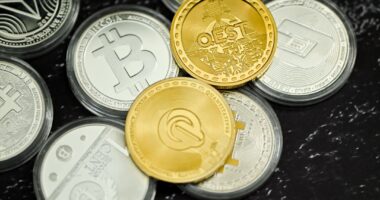Limited edition NFTs have gained significant popularity in the digital art market due to their scarcity and rarity. The principle of scarcity, which has long been associated with value, applies to NFTs as well. When artists release limited edition NFTs, they create a sense of exclusivity that increases the value of these digital assets.
Collectors and investors are often willing to pay premium prices for limited edition NFTs because of their rarity and potential for appreciation. The value of limited edition NFTs is often influenced by the artist’s reputation and the demand for their work. Established artists with a strong following can command higher prices for their limited edition NFTs due to the combination of high demand and limited supply.
This interplay between scarcity, reputation, and demand contributes to the increasing value of limited edition NFTs, making them potentially profitable investments for both artists and collectors. Limited edition NFTs also create a sense of urgency among potential buyers. The knowledge that a particular piece of digital art may no longer be available once the limited edition is sold out can drive demand and increase value.
This fear of missing out (FOMO) phenomenon further contributes to the desirability of limited edition NFTs in the digital art market. The scarcity and rarity of limited edition NFTs play a crucial role in determining their value, making them highly sought-after assets in the digital art world. As the NFT market continues to evolve, the principles of scarcity and rarity are likely to remain important factors in shaping the value and appeal of digital art collectibles.
Key Takeaways
- Limited edition NFTs drive value through scarcity and rarity, creating a sense of exclusivity and desirability among collectors.
- Aesthetics and originality play a significant role in determining NFT prices, with unique and visually appealing artworks commanding higher valuations.
- Popularity and trends heavily influence NFT valuation, as artworks tied to cultural moments or social movements often attract greater demand and higher prices.
- Blockchain technology is crucial in establishing the authenticity and ownership of NFTs, providing a secure and transparent way to verify the provenance of digital assets.
- NFTs with real-world applications and use cases are experiencing rising demand, as collectors seek tangible utility and functionality beyond mere ownership.
- Market hype and speculative trading significantly impact NFT valuation, leading to price fluctuations driven by investor sentiment and trading activity.
- Government regulations and intellectual property rights have a substantial impact on NFT prices, with legal factors shaping the market and influencing investor confidence.
Artistic and Creative Merit: Understanding the Impact of Aesthetics and Originality on NFT Prices
The Role of Aesthetic Appeal
The artistic and creative merit of an NFT has a significant impact on its price and value in the digital art market. Just like traditional art, the aesthetic appeal and originality of a digital artwork can greatly influence its desirability and value. Collectors and investors are drawn to NFTs that showcase exceptional artistic talent, creativity, and innovation, as these qualities set the artwork apart and make it more valuable.
The Importance of Originality
Originality is also a key factor in determining the value of an NFT. Artists who create unique and original digital artworks are able to command higher prices for their NFTs, as collectors are willing to pay a premium for one-of-a-kind pieces that cannot be replicated or reproduced. The scarcity of original digital artworks further adds to their value, as collectors seek out rare and unique pieces to add to their collections.
The Impact of Emotional Connection
The aesthetic appeal of an NFT plays a crucial role in determining its value. Artworks that are visually stunning, thought-provoking, or emotionally impactful are more likely to attract buyers and command higher prices. The beauty and artistic merit of a digital artwork can evoke strong emotions and connections with collectors, making them more willing to invest in the piece and drive up its value in the market.
Therefore, the artistic and creative merit of an NFT is a fundamental factor in determining its price and desirability among collectors and investors.
Cultural and Social Significance: Examining the Influence of Popularity and Trends on NFT Valuation

The cultural and social significance of an NFT can have a profound impact on its valuation in the digital art market. Popularity and trends play a significant role in determining the value of an NFT, as artworks that resonate with current cultural movements or social trends are more likely to attract attention and command higher prices. Collectors are often drawn to NFTs that reflect the zeitgeist or capture the spirit of the times, as these artworks hold greater cultural relevance and significance.
Furthermore, the influence of popular culture on NFT valuation cannot be understated. NFTs that reference iconic figures, events, or symbols from popular culture are often highly sought after by collectors who are drawn to the nostalgia and emotional connections associated with these references. Artworks that tap into popular culture trends or phenomena can quickly gain traction in the market and see a surge in value as demand for these culturally significant NFTs grows.
Trends also play a crucial role in shaping the valuation of NFTs, as artworks that align with current trends or movements in the digital art world are more likely to attract buyers and command higher prices. Collectors are often on the lookout for the next big trend or emerging artist, driving up the value of NFTs that are associated with popular movements or styles. As such, the cultural and social significance of an NFT can greatly influence its valuation, making it an important factor for artists and collectors to consider in the digital art market.
Authenticity and Ownership: The Importance of Blockchain Technology in Establishing NFT Value
Blockchain technology plays a pivotal role in establishing the authenticity and ownership of NFTs, which in turn influences their value in the digital art market. The decentralized nature of blockchain technology ensures that each NFT is unique, verifiable, and tamper-proof, providing a secure and transparent record of ownership for digital artworks. This level of authenticity and ownership is crucial for establishing the value of an NFT, as it gives collectors confidence in the provenance and legitimacy of the artwork they are purchasing.
Moreover, blockchain technology enables artists to create scarcity and rarity for their digital artworks by minting limited edition NFTs with unique identifiers on the blockchain. This process ensures that each limited edition NFT is one-of-a-kind and cannot be duplicated or counterfeited, adding to its value as a rare and authentic digital asset. Collectors are willing to pay a premium for NFTs with verifiable ownership on the blockchain, as it provides them with assurance that they are investing in a genuine and original piece of digital art.
The transparency and immutability of blockchain technology also play a crucial role in establishing trust between artists and collectors in the digital art market. By providing a secure and transparent record of ownership, blockchain technology helps to mitigate concerns about fraud or counterfeit artworks, giving buyers peace of mind when investing in NFTs. As such, the importance of blockchain technology in establishing authenticity and ownership cannot be overstated, as it directly impacts the value and desirability of NFTs in the digital art market.
Utility and Functionality: The Rising Demand for NFTs with Real-world Applications and Use Cases
The rising demand for NFTs with real-world applications and use cases has significantly impacted their valuation in the digital art market. While many NFTs are purely collectible digital assets, there is a growing trend towards creating NFTs that have utility and functionality beyond their artistic value. These utility-based NFTs can represent ownership rights to physical assets, access to exclusive content or experiences, or even serve as tokens for participation in decentralized finance (DeFi) platforms.
NFTs with real-world applications are highly sought after by collectors and investors who are looking for tangible benefits beyond mere ownership of digital art. These utility-based NFTs offer additional value propositions that go beyond aesthetic appeal, making them more attractive investment opportunities for buyers. As a result, NFTs with real-world applications command higher prices in the market due to their added utility and functionality.
Furthermore, utility-based NFTs have the potential to unlock new revenue streams for artists and creators by offering additional services or benefits to their collectors. For example, musicians can release limited edition music NFTs that grant access to exclusive concerts or backstage experiences, providing added value to their fans and supporters. This shift towards utility-based NFTs reflects a broader trend in the digital art market towards creating more meaningful and interactive experiences for collectors, driving up the demand and valuation of these innovative digital assets.
Speculation and Investment: Unpacking the Role of Market Hype and Speculative Trading in NFT Valuation

The Impact of Market Hype on NFT Valuations
Market hype can create artificial demand for certain NFTs, leading to inflated prices driven by speculation rather than intrinsic value. News headlines and high-profile celebrity endorsements can fuel further speculation and hype around certain artworks, driving up their valuation beyond what may be justified by their artistic or cultural significance.
The Double-Edged Sword of Speculation
While speculation can lead to short-term price volatility and inflated valuations, it also brings attention and liquidity to the market, which can benefit artists and creators by increasing visibility for their work. Speculation is not unique to the NFT market, as it is a common phenomenon in financial markets across various asset classes.
A Balanced View of Speculation in the NFT Market
In conclusion, while speculation plays a role in driving up the valuation of NFTs, it is just one factor among many that influence the pricing dynamics in the digital art market. A balanced view of speculation is necessary to understand its impact on the market and to recognize its benefits and drawbacks.
Regulatory and Legal Factors: Considering the Impact of Government Regulations and Intellectual Property Rights on NFT Prices
Government regulations and intellectual property rights have a significant impact on the valuation of NFTs in the digital art market. As the popularity of NFTs continues to grow, regulators around the world are grappling with how to classify and regulate these digital assets within existing legal frameworks. Uncertainty around regulatory compliance can create risks for buyers and sellers of NFTs, leading to potential price volatility as market participants navigate evolving legal landscapes.
Furthermore, intellectual property rights play a crucial role in determining the value of NFTs, as artists need to protect their copyrights and ownership rights over their digital artworks. The ability to prove ownership and authenticity through blockchain technology is essential for safeguarding intellectual property rights in the digital art market, as it provides artists with a secure record of their creations that can be used to enforce copyright protections. Additionally, legal considerations such as licensing agreements and resale rights can impact the valuation of NFTs, as they determine how artists are compensated for secondary sales of their digital artworks.
Artists who retain control over licensing agreements for their NFTs can negotiate royalties for each subsequent sale, providing them with ongoing revenue streams from their creations. These legal arrangements can add value to an artist’s work by ensuring that they are fairly compensated for their contributions to the digital art market. In conclusion, scarcity and rarity drive up the value of limited edition NFTs due to exclusivity; artistic merit influences desirability; cultural significance impacts popularity; blockchain technology establishes authenticity; utility-based NFTs offer tangible benefits; speculative trading affects short-term valuations; regulatory factors create legal risks; intellectual property rights protect artists’ creations.
FAQs
What is an NFT?
An NFT, or non-fungible token, is a digital asset that represents ownership or proof of authenticity of a unique item or piece of content, such as artwork, music, videos, or collectibles, using blockchain technology.
What makes an NFT valuable?
Several factors contribute to the value of an NFT, including the rarity, uniqueness, provenance, artist reputation, historical significance, and demand for the digital asset.
How does rarity affect the value of an NFT?
Rarity plays a significant role in determining the value of an NFT. Scarce or one-of-a-kind digital assets are often more valuable due to their limited availability and desirability among collectors and investors.
What is the role of provenance in NFT value?
Provenance, or the documented history of ownership and creation, can impact the value of an NFT. A strong and verifiable provenance can increase the perceived value and authenticity of a digital asset.
How does artist reputation influence NFT value?
The reputation and recognition of the artist or creator behind an NFT can significantly impact its value. Established and well-known artists may command higher prices for their digital works due to their existing fan base and market demand.
What are the controversial factors driving NFT prices?
Controversial factors driving NFT prices include speculative trading, market manipulation, celebrity endorsements, and the influence of social media hype and trends on valuations. These factors have led to debates about the true intrinsic value of NFTs.





